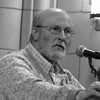Subtotal: $
Checkout-

Solidarity
-

Advice from a Senior Demon
-

Differences
-

Let Yourself Be Eaten
-

Repentance
-

At Table
-

Poem: Rainfall
-

From Property to Community
-

Why Community Is Dangerous
-

Confessing to One Another
-

The Way: Two Millennia of Christian Community
-

Friars of Manhattan
-

American Hospitality: Jubilee Partners
-

Live Like You Give a Damn
-

The Luxury of Being Surprised
-

The Incident in Changu’s Pepper Patch
-

Two Poems
-

Editors’ Picks Issue 9
-

The Jesus Indians of Ohio
-

Three Open Wounds
-

Why I Love to Wear a Head Covering
-

Vincent van Gogh
-

All Things in Common?
-

The Sacrament of the Last Supper
-

Readers Respond Summer 2016
-

Serving Children in Pyongyang
-

Blessing out of Pain

Jerusalem, ca. AD 33: “They devoted themselves to the apostles’ teaching and fellowship, to the breaking of bread and the prayers. And fear came upon every soul; and many wonders and signs were done through the apostles. And all who believed were together and had all things in common; and they sold their possessions and goods and distributed them to all, as any had need. And day by day, attending the temple together and breaking bread in their homes, they partook of food with glad and generous hearts, praising God and having favor with all the people. And the Lord added to their number day by day those who were being saved.” —Acts 2:42–47 (RSV)
Already a subscriber? Sign in
Try 3 months of unlimited access. Start your FREE TRIAL today. Cancel anytime.
How would you go about destroying community, isolating people from one another and from a life shared with others? Over thirty years ago Howard Snyder asked this question and offered the following strategies: fragment family life, move people away from the neighborhoods where they grew up, set people farther apart by giving them bigger houses and yards, and separate the places people work from where they live.footnote In other words, “partition off people’s lives into as many worlds as possible.” To facilitate the process, get everyone his or her own car. Replace meaningful communication with television. And finally, cut down on family size and fill people’s homes with things instead. The result? A post-familial, disconnected culture where self is king, relationships are thin, and individuals fend for themselves.
As a result, our culture – in the words of the writer Michael Frost – has become like an airport departure lounge, “full of people who don’t belong where they currently find themselves and whose interactions with others are fleeting, perfunctory, and trivial.”footnote Nobody belongs there, nobody is truly present, and nobody wants to be there. We’re tourists who graze from one experience to another, nibbling here and sampling there, but with very little commitment to bind us to one another.
The disappearance of community has led to a plethora of human and social problems, which have been exposed and explored in countless books. But what can we do about it? Many social commentators have addressed the problem and continue to grapple with it. New structures of belonging have been proposed, many of which hold promise. But the real answer lies in the hands of God’s people. We need more than new structures. We need a spirit-filled life that is capable of combating the corrosive ideologies of our age. Only when the church lives out its original calling, as a contrast community and foretaste of God’s coming reign, is there hope for the world. And there is hope. The Bible assures us that through faith in Jesus and by God’s spirit a new kind of social existence is possible. Christ has defeated the principalities and powers that keep people apart. In him relationships can be healed and transformed. This is what being the church is all about.
Committed followers of Christ from every corner of society and from all walks of life are responding to Christ’s call to embody an integrated spirituality that encompasses the whole of life and is lived out with others. New intentional communities are emerging that bear witness to Christ’s healing power. A radical renaissance is unfolding among disenchanted Christians who are no longer satisfied with either Sunday religion or social activism. Today’s Christians want to be the church, to follow Christ together and demonstrate in their daily lives the radical, transforming love of God.
Of course, in a world in which family life is undermined and faithfulness and loyalty are old-fashioned concepts, living in community will not be easy. The broader culture rarely reinforces values such as fidelity, the common good, and social solidarity. It’s everyone out for themselves. We’re on our own, whether we like it or not. And yet for growing numbers of Christians this world, with its dominant ideology of expressive individualism, is not the final adjudicator of what is or is not possible, let alone desirable. The world Christ was born into was also splintered and confused; it was violent, factious, morally corrupt, spiritually bankrupt, full of tensions, and teeming with competing interests. Yet, into this world a brand new social order erupted. It caught everybody’s attention, and eventually transformed the entire Roman pagan system.
It’s a matter of whether we will lay down our lives for one another. It has been said that true community is all or nothing, and that communities which try to get there by degrees just get stuck. This may be true. And yet, much like a healthy marriage, it takes time and wisdom to build a community. It also takes very little to break and destroy a community. Perhaps this is one of the reasons why so few people dare to commit themselves to building a common life. As Henri Nouwen writes, fearful distance is awful, but fearful closeness, if not properly navigated, can turn into a nightmare.footnote
Thomas Merton once noted that living alone does not necessarily isolate people, and that merely living together does not necessarily bring us into communion with one another.footnote So what is the key to communing with one another? Community as Christ intended it demands, if nothing else, a commitment to care for one another – to be our brother’s and sister’s keeper. Without simple deeds of love, community is not possible.
Dr. Paul Brand, who devoted himself to eliminating leprosy, was once working alone in an attic when he came across some boxes of skeletons that had been dug up from a monastery. He remembered a lecture he heard given by anthropologist Margaret Mead, who spent much of her life researching prehistoric peoples. She asked her audience, “What is the earliest sign of civilization? A clay pot? Iron? Tools? Agriculture?” No, she claimed, it was a healed leg bone. Brand recalls:
She explained that such healings were never found in the remains of competitive, savage societies. There, clues of violence abounded: temples pierced by arrows, skulls crushed by clubs. But the healed femur showed that someone must have cared for the injured person – hunted on his behalf, brought him food, and served him at personal sacrifice. Savage societies could not afford such pity. I found similar evidence of healing in the bones from the churchyard. I later learned that an order of monks had worked among the victims: their concern came to light five hundred years later in the thin lines of healing where infected bone had cracked apart or eroded and then grown back together.footnote
Community is all about helping each other – caring enough to invest oneself in the “thin lines of healing.” There is no other way to have community. The apostle Paul wrote, “The only thing that counts is faith expressing itself through love” (Gal. 5:6). Words and ideas, forms and structures, can take us only so far. In the end, it’s a matter of whether we will lay down our lives for one another. For Christ’s followers, this is not just a matter of obedience but the distinguishing mark of our witness. Jesus says, “A new command I give you: Love one another. As I have loved you, so you must love one another. By this everyone will know that you are my disciples, if you love one another” (John 13:34–35).
From Called to Community: The Life Jesus Wants for His People


Footnotes
- Howard A. Snyder, Liberating the Church: The Ecology of Church and Kingdom (Downers Grove, IL: InterVarsity Press, 1983), 113–114.
- Michael Frost, Incarnate: The Body of Christ in an Age of Disengagement (Downers Grove, IL: IVP Books, 2014), 16.
- Henri J. M. Nouwen, Lifesigns: Intimacy, Fecundity, and Ecstasy in Christian Perspective (New York: Doubleday, 2013), 19.
- Thomas Merton, New Seeds of Contemplation (New York: New Directions Books, 1972), 55.
- Paul Brand and Philip Yancey, Fearfully and Wonderfully Made (Grand Rapids, MI: Zondervan, 1980), 68.
Already a subscriber? Sign in
Try 3 months of unlimited access. Start your FREE TRIAL today. Cancel anytime.






































Dan Grubbs
Nicely done, Mr. Moore. And, as Mr. Hart has pointed out in an earlier comment, convicting. It was not without the wisdom of God that the inspired writer wrote that the love of gain is a root of evil. I put myself out of community by believing I needed to have this kind of job, that kind of house, and the other kind of car. I put myself out of community believing we need a second income in order to provide for our children. I put myself out of community by building my identity into what I did for employment, rather than letting Christ be my identity. Love for these things is evil because it directs our attention to their gain and away from God. Am I saying we shouldn’t have jobs and live in houses? Of course not. I am saying that I agree with Mr. Moore that unless we re-enter where God is working then we are out of community and not living as intended. In the Garden, Adam and Eve lived in communion with God in a fellowship that actually was a deep sharing. For many of us, we are on the outside looking in on this model and only need to join again God’s people who are already living in the community that God intended.
Sean Patrick Hart
tearfully joyful, convicting, disconcerting yet so truthful and hopeful glimpse of heaven
David Linka
good article.
Stewart Patrick
"Christians who are no longer satisfied with either Sunday religion or social activism." A very good observation here. For too long I feel, disenchanted Christians have turned to 'the worlds' activism agenda, and not to the discerning of the Lord's agenda for right now, today. It takes some effort to seek that, in the Spirit, not in the flesh. Eg. Jesus in the wilderness.